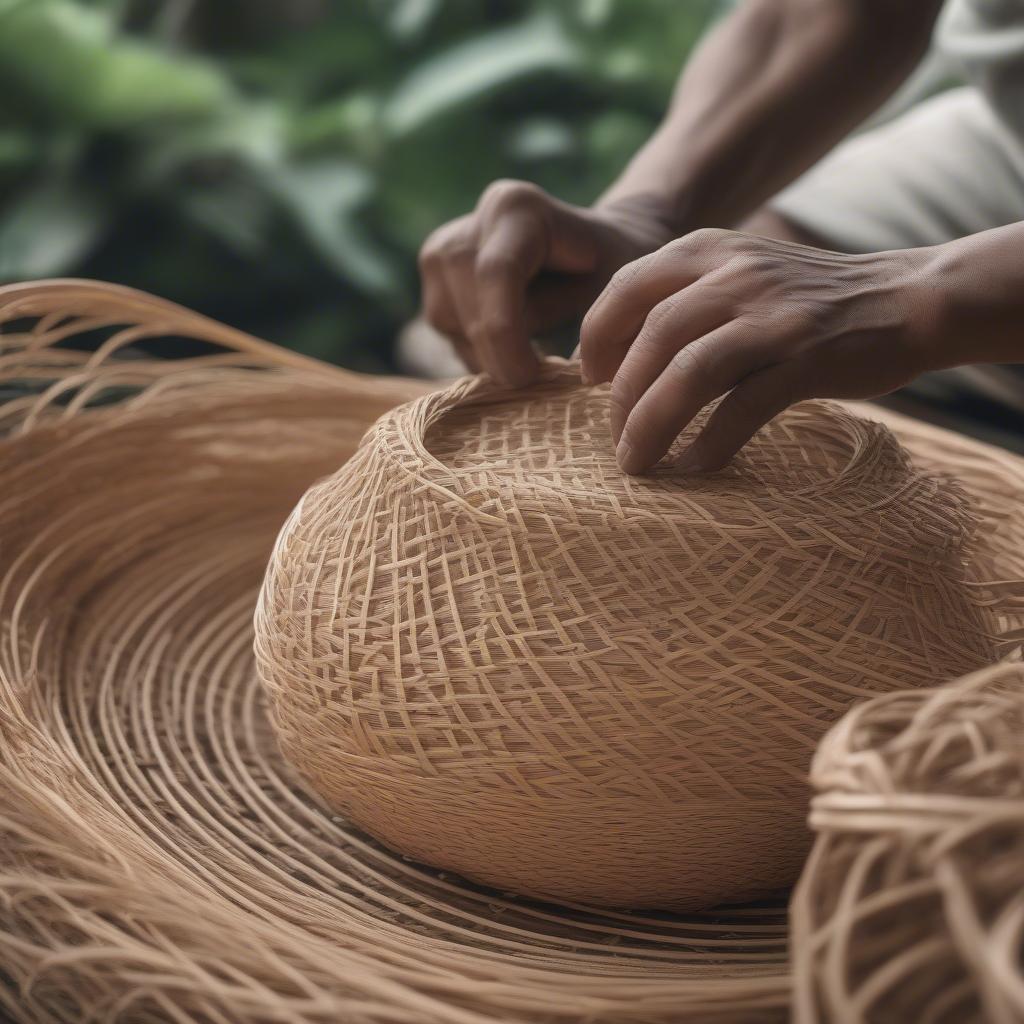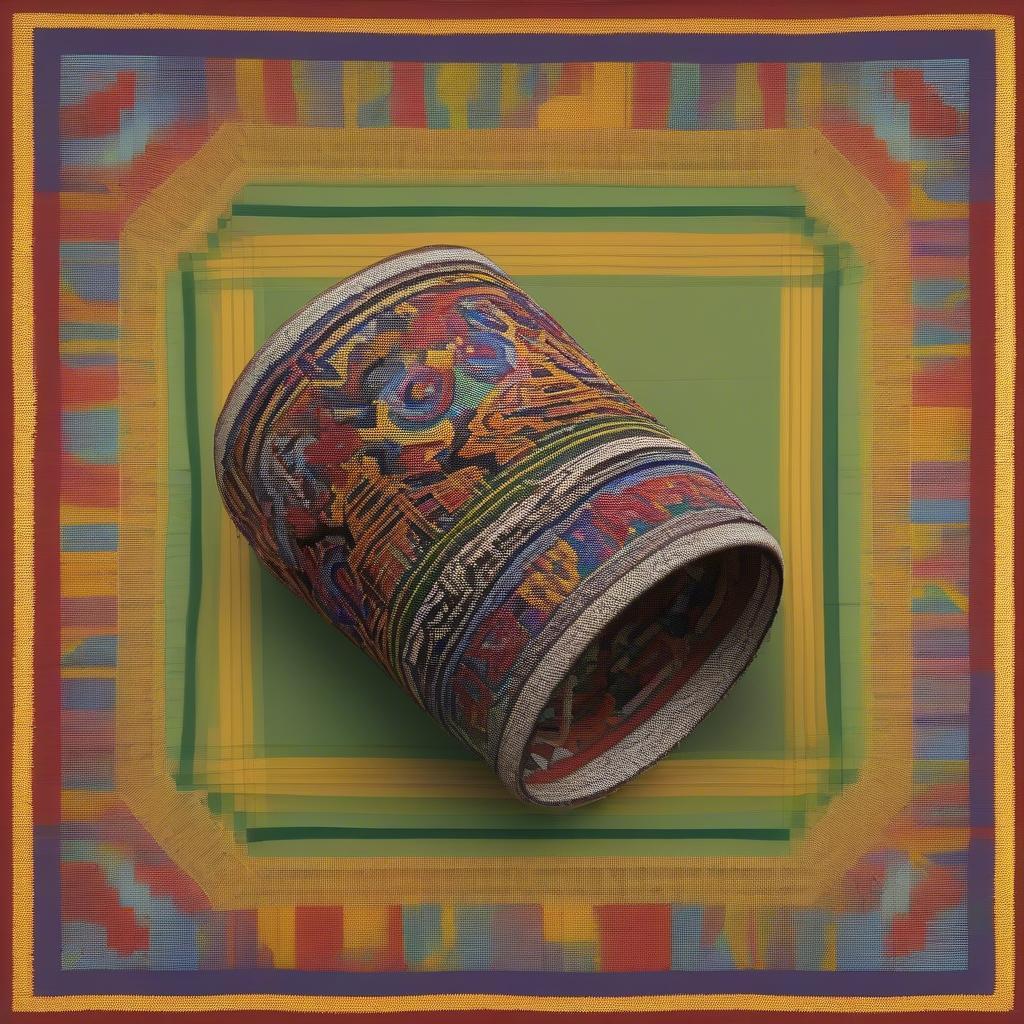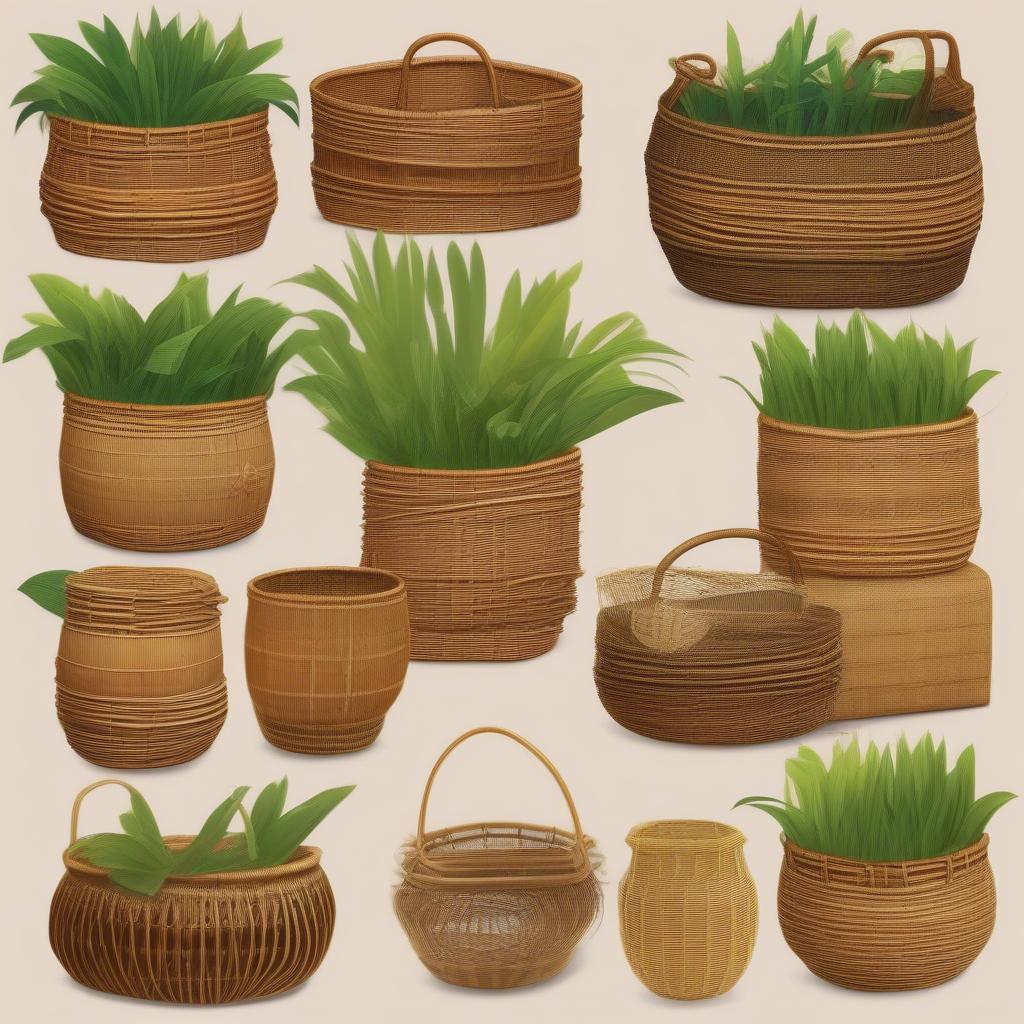Basket Weaving
Discovering Primitive Philippine Basket Weaving Styles
Primitive Philippine Basket Weaving Styles offer a fascinating glimpse into the rich cultural heritage of the islands. These intricate techniques, passed down through generations, utilize readily available natural materials like bamboo, rattan, and nito vines, transforming them into functional works of art. This article explores the unique characteristics of these ancient weaving traditions, highlighting their significance and enduring beauty.
Unveiling the Intricacies of Primitive Philippine Basket Weaving
The Philippines boasts a diverse array of indigenous basket weaving styles, each reflecting the unique environment and traditions of its respective region. These “primitive” styles, a term reflecting their deep historical roots, are far from simple. They often involve complex patterns and sophisticated techniques that require immense skill and patience. The resulting baskets are not merely utilitarian objects, but expressions of cultural identity and artistic prowess.
One key aspect of primitive Philippine basket weaving is the close relationship between the weaver and the natural world. Materials are ethically harvested and prepared with care, reflecting a deep respect for the environment. From the sturdy bamboo used for structural elements to the flexible rattan woven into intricate designs, each material plays a crucial role in the final product.
 Close-up of hands weaving a traditional Philippine basket using nito vines.
Close-up of hands weaving a traditional Philippine basket using nito vines.
A Look at Regional Variations in Basketry
Different regions of the Philippines have developed distinct basket weaving styles, often identifiable by the materials used and the specific patterns employed. For example, the Bontoc people of the Cordillera region are known for their sturdy, coiled baskets made from rattan, while the T’boli of Mindanao create intricately beaded baskets that incorporate vibrant colors and symbolic designs. Exploring these regional variations offers a deeper understanding of the cultural tapestry that makes up the Philippines.
 A vibrant T'boli beaded basket with intricate designs.
A vibrant T'boli beaded basket with intricate designs.
The Significance of Basket Weaving in Philippine Culture
Basket weaving is more than just a craft in the Philippines; it is a deeply ingrained cultural practice. Baskets play an essential role in daily life, used for everything from carrying goods to storing rice and fishing. They are also integral to many traditional ceremonies and rituals, symbolizing prosperity, abundance, and connection to the ancestors.
“Basket weaving is the language of our ancestors,” explains Maria Reyes, a renowned basket weaver from Luzon. “Each weave tells a story, connecting us to our past and shaping our future.” This sentiment highlights the profound cultural significance of these woven treasures.
Materials and Techniques: A Deeper Dive
The materials used in primitive Philippine basket weaving are as diverse as the styles themselves. While rattan and bamboo are common, other materials like nito vine, pandan leaves, and even abaca fiber are also utilized. The techniques employed are equally varied, ranging from simple plaiting to complex twining and coiling methods. This article will touch on basket weaving in general, and doesn’t provide detailed instructions like you may find at a basket weave illustrator tutorial.
 A display of various natural materials used in Philippine basket weaving, including rattan, bamboo, nito vine, and pandan leaves.
A display of various natural materials used in Philippine basket weaving, including rattan, bamboo, nito vine, and pandan leaves.
Preserving a Timeless Tradition
As the world modernizes, it is crucial to preserve these traditional crafts. Organizations and individuals are working to support basket weavers, ensuring that these skills are passed on to future generations. By appreciating and supporting these artisans, we help to safeguard a vital part of Philippine cultural heritage. Maybe you’d like to learn other basket weaving techniques, like pathfinder craft basket weaving.
In conclusion, primitive Philippine basket weaving styles offer a captivating journey into the heart of Filipino culture. These intricate and beautiful creations represent a tangible link to the past, reminding us of the ingenuity and artistry of our ancestors. By understanding and appreciating these traditions, we can help to ensure their continued existence for generations to come. Perhaps another interesting topic would be basket weave cable patter adobe. What are primitive Philippine basket weaving styles? They’re a testament to the ingenuity and artistry of the Filipino people.
FAQ
- What are the most common materials used in primitive Philippine basket weaving?
- What are some of the key regional variations in Philippine basketry?
- How are traditional basket weaving techniques being preserved in the Philippines?
- Where can I purchase authentic Philippine baskets?
- What is the cultural significance of basket weaving in the Philippines?
- What are some of the different techniques used in primitive Philippine basket weaving?
- How can I learn more about Philippine basket weaving?
Basket weaving is such a vast subject that you can easily spend days just on a specific type like pathfinder basket weaving or on graphic software like basket weave illustrator.
For further assistance, please contact us at Hanoi, Vietnam or Tech Avenue, Suite 12, San Francisco, CA 94105, USA. We have a 24/7 customer service team.
